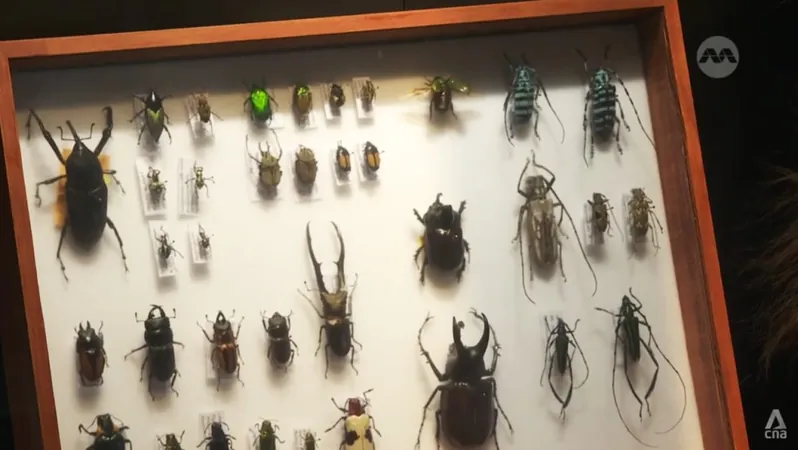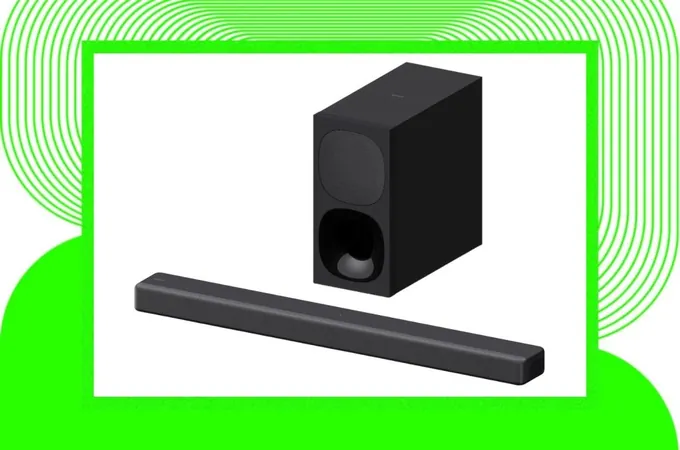
Revolutionizing Communication for Stroke Victims: $19 Million Investment in Groundbreaking Brain Implants
2025-04-15
Author: Mei
A Historic Breakthrough for Aphasia Patients
In an inspiring collaboration between the University of Michigan (U-M) and Stanford University, innovative technology is on the horizon to help stroke patients regain their ability to communicate. With a substantial $29.7 million grant announced by the Marcus Foundation, this initiative aims to empower victims of aphasic strokes, who face challenges in communication even while retaining their comprehension abilities.
U-M will receive $19 million of this funding to design and construct impressive new brain implant technology. The stakes are high: strokes are the leading cause of disability in the U.S., leaving over a million Americans struggling with aphasia, and adding more than 210,000 new cases each year.
Innovative Brain-Computer Interface Set to Change Lives
Leading this transformative project are U-M researchers Cindy Chestek and David Blaauw, who are developing a long-term brain-computer interface featuring advanced implantable technology. Meanwhile, their counterparts at Stanford will explore ways to decode speech from unaffected areas of the brain of stroke survivors.
"Current technology is outdated and has limitations, often causing scar tissue in the brain over time," explains Chestek, a U-M professor. "We’re innovating far beyond that with a new device comprised of tiny carbon-based electrodes that are dramatically smaller and less invasive."
Game-Changing Technology for Speech Restoration
These tiny electrodes will capture brain signals in the temporal region, which processes language and remains largely intact in cases of aphasia. Impressively, these electrodes are even smaller than human capillaries, minimizing damage and disruption to the brain.
Coupled with wireless technology, this device will provide a revolutionary change in how communication can be restored, setting U-M's work apart from existing products in the market that rely on wired connections.
A Collaborative Future in Neuroscience
The Stanford team, led by neurosurgery experts Jaimie Henderson and Frank Willett, plans to implant U-M’s devices in patients to facilitate speech recovery. "This research addresses a critical gap—no existing therapies can currently restore speech in aphasic patients," Henderson remarks, emphasizing the novelty of their approach.
A Legacy of Philanthropy and Innovation
The Marcus Foundation, established by Home Depot co-founder Bernie Marcus, has been a strong supporter of groundbreaking research since its inception in 1989. With a commitment of over $2.7 billion in grants, Marcus’s legacy continues to foster innovation in various fields, particularly in medicine.
As Jonathan Simons, chief science officer of the Marcus Foundation states, "We’re thrilled to launch this dynamic team focused on precision brain-computer interfaces for patients with aphasia. The potential to restore speech crosses the boundaries of traditional research and could dramatically change lives."
A Step Toward the Future of Medical Advances
This ambitious project heralds a new era in neuroscience care for stroke patients, aiming to bridge the gap between medical research and real-world applications. As the development unfolds, the hope is to bring speech back to those who have tragically lost it.



 Brasil (PT)
Brasil (PT)
 Canada (EN)
Canada (EN)
 Chile (ES)
Chile (ES)
 Česko (CS)
Česko (CS)
 대한민국 (KO)
대한민국 (KO)
 España (ES)
España (ES)
 France (FR)
France (FR)
 Hong Kong (EN)
Hong Kong (EN)
 Italia (IT)
Italia (IT)
 日本 (JA)
日本 (JA)
 Magyarország (HU)
Magyarország (HU)
 Norge (NO)
Norge (NO)
 Polska (PL)
Polska (PL)
 Schweiz (DE)
Schweiz (DE)
 Singapore (EN)
Singapore (EN)
 Sverige (SV)
Sverige (SV)
 Suomi (FI)
Suomi (FI)
 Türkiye (TR)
Türkiye (TR)
 الإمارات العربية المتحدة (AR)
الإمارات العربية المتحدة (AR)